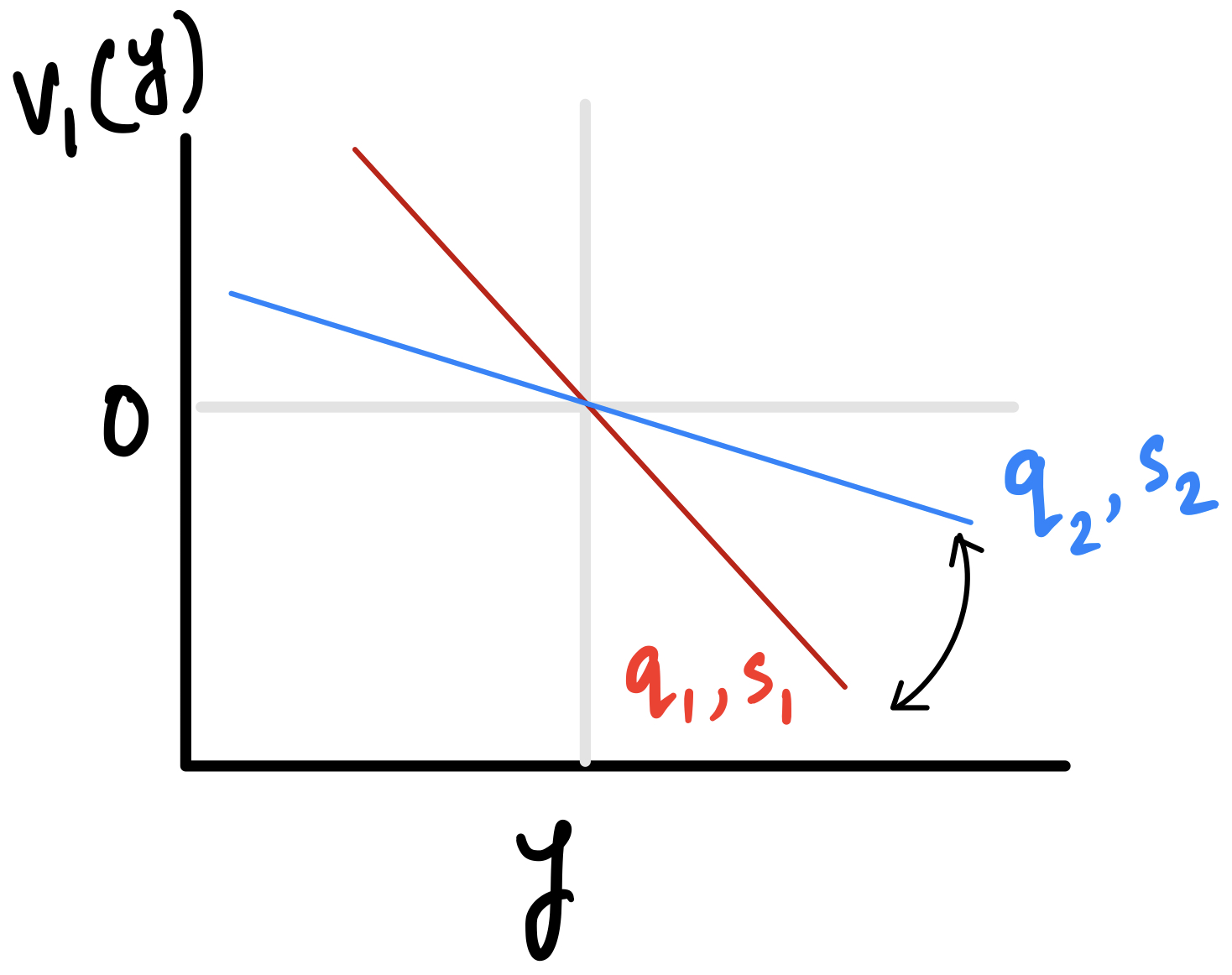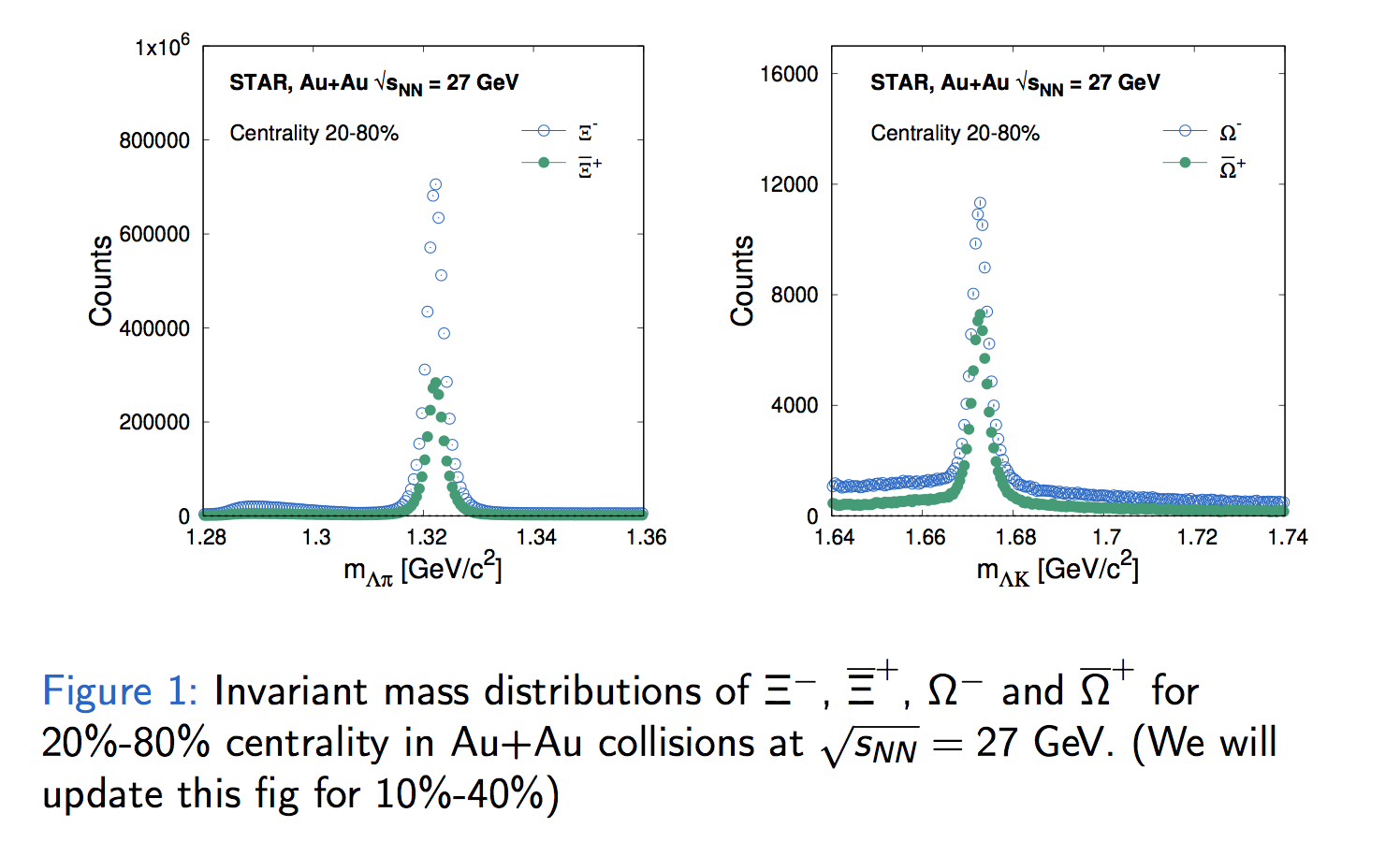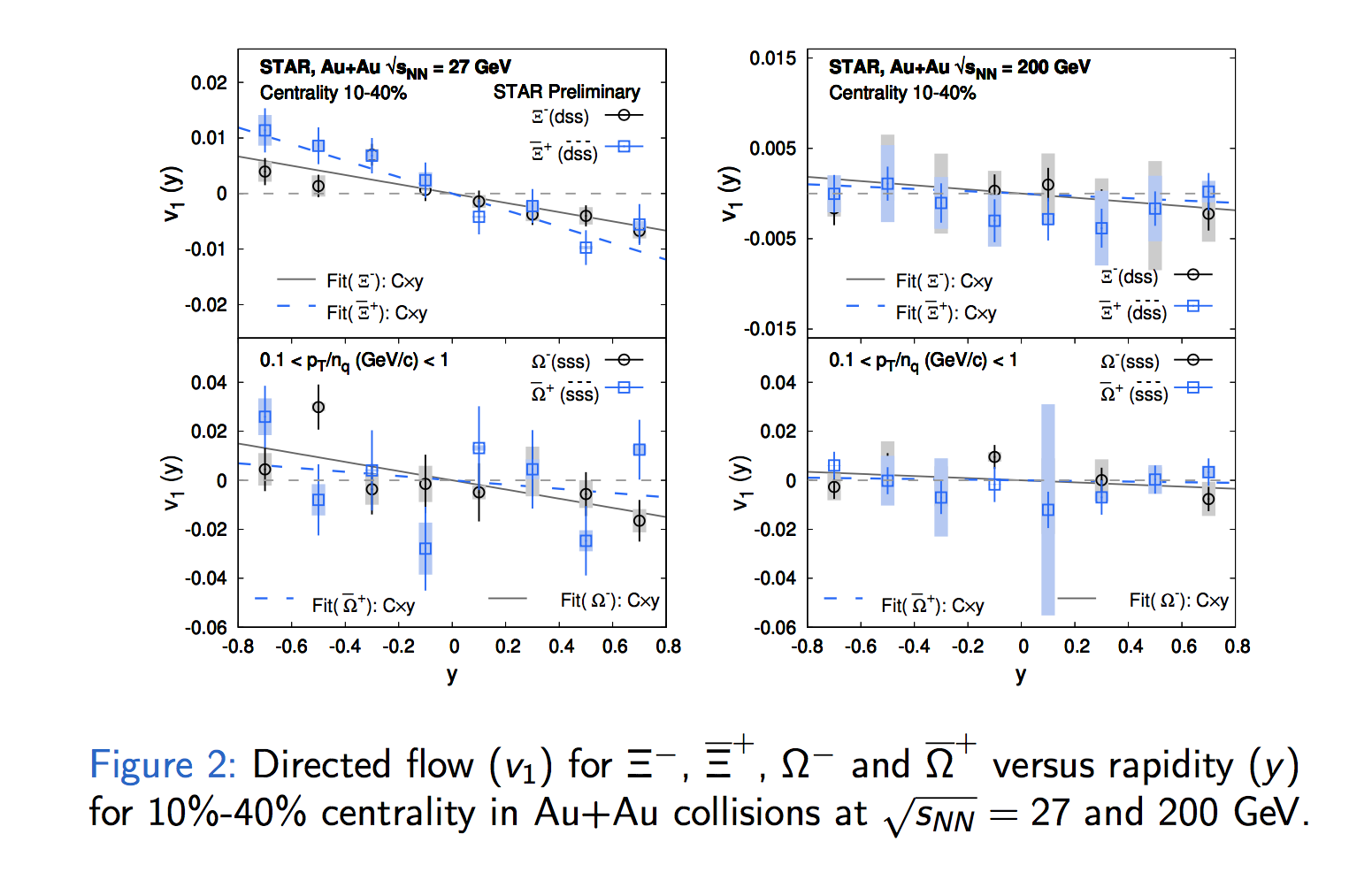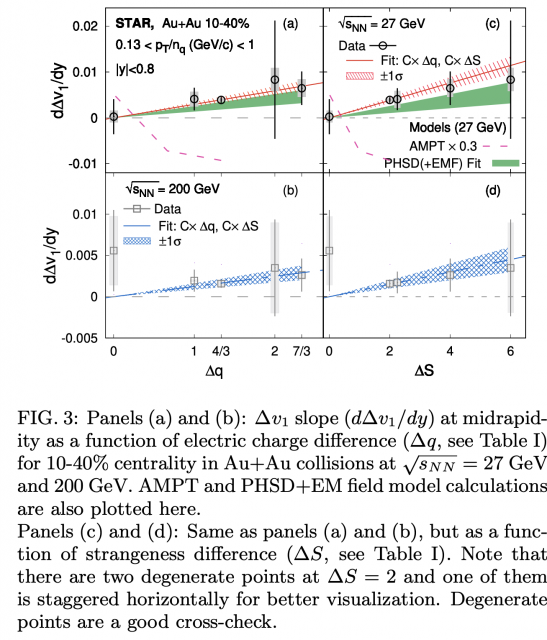Quark Coalescence and Directed Flow in Au+Au Collisions
Title: Electric charge and strangeness dependent directed flow of produced quarks in $Au+Au$ collisions at RHIC
PA's: Ashik Ikbal Sheikh, Declan Keane and Prithwish Tribedy
Target Journal: Physical Review Letters
https://drupal.star.bnl.gov/STAR/system/files/ms_gpc332_collab_review_ver4.pdf
https://drupal.star.bnl.gov/STAR/system/files/v1spliting_data_paper_ver1.pdf
Analysis note: https://drupal.star.bnl.gov/STAR/system/files/AN_CoalescenceQuarkFlow_ver1.pdf
Analysis codes on RCF: /star/u/ashik/codes_v1splitting
Paper proposal presentations:
https://drupal.star.bnl.gov/STAR/system/files/pwgc_preview_aug272021_ashik.pdf
https://drupal.star.bnl.gov/STAR/system/files/pwgcrequest_aug092021_ashik.pdf
Presentations at FCV-PWG:
https://drupal.star.bnl.gov/STAR/system/files/BulkCorr_May062020_ashik.pdf
https://drupal.star.bnl.gov/STAR/system/files/BulkCorr_July012020_ashik.pdf
https://drupal.star.bnl.gov/STAR/system/files/CollabMeet_Sep172020_ashik.pdf
https://drupal.star.bnl.gov/STAR/system/files/FCVmeeting_Oct072020_ashik.pdf
https://drupal.star.bnl.gov/STAR/system/files/FCVmeeting_27Jan2021_ashik_0.pdf
Abstract: We report the first measurement of the rapidity odd directed flow (v1) of multi-strange baryons (Ξ and Ω) as well as precision measurements of identified hadrons (K−, p ̄, Λ ̄ and φ) in Au+Au collisions as recorded by the STAR detector at the Relativistic Heavy Ion Collider. We focus on particle species where all constituent quarks are produced, and demonstrate using a novel analysis that the coalescence sum rule holds for hadrons with identical quark content. However, significant splitting of the slope of directed flow versus rapidity is observed for hadrons when there is an increasing difference in the electric charge (∆q)) and the strangeness (∆S) content of the constituent quarks. The strength of this splitting becomes weaker going from collision energy$\sqrt{s_{NN}}=$ 27 GeV to 200 GeV. The Parton-Hadron String Dynamics (PHSD) model including electromagnetic field calculations can describe the data within the uncertainties. The measurements suggest that electromagnetic fields and/or QCD-driven effects may influence the directed flow of produced quarks.
Goal: The analysis is motivated from the question: what does drive the splitting of directed flow v1 of produced quarks? The splitting (d∆v1/dy) could be due to QED (initial EM-Field) and/or QCD (medium effects on strange and non-strange particles) effect. In order to answer the above, we measure d∆v1/dy with net charge (∆q) and net strangeness (∆S).


Analysis Approach: Our approach is based on quark coalescence mechanism. The coalescence inspired sum rule says that flow of a hadron is the addition of flow of the constituent quarks. We focus on different produced particles such as K−, p ̄, Λ ̄, φ, Ξ+, Ω− and Ω+ and make combinations in such a way that they have same mass but different ∆q and ∆S - Got 10 such combinations as shown in the Table 1.
By choosing produced particles, we can avoid the transported quarks (u and d quarks) from beam rapidity to the mid-rapidity which can complicate the scenario. Please note here that we choose same $p_T/n_q$-y phase space (where $n_q$ is the no. of constituent quarks) for coalescence to hold. Firstly, we show that the coalescence inspired sum rule holds for identical produced quark combination then the systematic violation of this sum rule with ∆q and ∆S.
 .
.
Figures for the paper:


 .
.
Summary and Conclusions: In summary, we report the first measurements of $v_1(y)$ of multi-strange baryons ($\Xi$ and $\Omega$) and precision measurements of identified hadrons (K−, p ̄, Λ ̄ and φ) in Au+Au collisions at $\sqrt{s_{NN}}=$ 27 GeV and 200 GeV. We focus on different produced particles, K−, p ̄, Λ ̄, φ, Ξ+, Ω− and Ω+; and by using a novel analysis technique we measure directed flow splitting as a function of ∆q and ∆S. The d∆v1/dy, measure of splitting, increases with ∆q and ∆S. The observed d∆v1/dy is compared with AMPT and PHSD model calculations. AMPT model predictions do not agree with the measurements. Measurements are consistent with the PHSD model calculations that include the effect of electromagnetic field. Electromagnetic fields and/or QCD-driven splitting may influence the splitting of produced quarks. The ∆S dependent splitting might offer possibilities of new physics.
- ashik's blog
- Login or register to post comments
